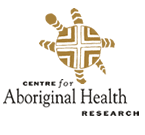Indigenous Peoples.Net (M-3 Post #5)
Indigenous Peoples.Net (M-4 Post #5)
http://www.indigenouspeople.net/sidemenu.html
This site contains information and resources for indigenous cultures on a global scale. There is a description of indigenous literature from all corners of the globe available on this site. One of the tools that it offers is the ability to translate text or web page into other languages.
To translate any text or web page: click here Other Languages
– African Lit
– Arabic Lit
– Americas
– Art
– Chiapas Menu
– Chinese Lit
– Columbus
– Daily Inspirations
– Gaelic Lit
– Great Native Leaders
– Hawaiian Lit
– Indigenous Greetings / Docs
– Indigenous Music & Videos
– Indigenous Nations
– Indigenous Poetry
– Indigenous Stories
– Japanese Lit
– Kalash Lit
– Korean Lit
– Mexican Lit
– Persian Lit
– Racism
– Tai Chi
– Tibetan Lit
– What’s New & Unique
– World Nations
– Yuanji
November 18, 2009 No Comments
UsMob
 UsMob, Australia’s first Aborignal children’s interactive website, was created to allow users to interact with a virtual experience life in Hidden Valley camp outside of Alice Springs. This site was created with the vision of using new media to develop cross-cultural lines of communication, creating a non-fictional story of life in this area. The producer’s goal was to for children to learn about the community and consequence as opposed to assuming the Aboriginal children in Australia were obliged to catch up to the digital divide standards that have been determined by other communities.
UsMob, Australia’s first Aborignal children’s interactive website, was created to allow users to interact with a virtual experience life in Hidden Valley camp outside of Alice Springs. This site was created with the vision of using new media to develop cross-cultural lines of communication, creating a non-fictional story of life in this area. The producer’s goal was to for children to learn about the community and consequence as opposed to assuming the Aboriginal children in Australia were obliged to catch up to the digital divide standards that have been determined by other communities.
Set in the central desert of Australia. Visitors interact with Aboriginal teenagers adventures and crisis. This site encourages an exchange of culture, creativity, and experience between non-indigenous and Indigenous youth. Its hope is to inspire young Indigenous people to use the Internet to develop skills. This online environment was developed with a sensitivity to authoring biases ensuring that it is relevant to Indigenous audiences.
The interactive website takes visitors on a seven part journey which includes:
Episode 1: Kwatye (Water)
Aboriginal kids don’t get lost in the desert without any water… do they?
Fact Sheet: Finding Water in Desert
Fact Sheet: Different Foods in Arrernte Country
Episode 2: Money Day
Teased about her hearing aid at school, Della has to decide whose voice she will listen to.
Fact Sheet: Indigenous Languages in Australia
Fact Sheet: Deafness in Indigenous Communities
Episode 3: Ure (Fire)
When Harry burns a tree on someone else’s land, is it just nature that he is messing with?
Fact Sheet: Traditional Healing
Fact Sheet: Lhere Mparntwe
Episode 4: Wrong Skin
In a battle for the same boy, sisters Jacquita and Della must decide whether to follow their hearts or their traditional law.
Fact Sheet: Skin Names
Episode 5: Pmere Amekemeke (Sacred Sites)
10, 9, 8, 7… As their childhood days disappear and the non-Aboriginal world seems to be closing in, will Charlie and Harry’s friendship survive?
Fact Sheet: Traditional Stories
Fact Sheet: Sacred Sites
Episode 6: Sniffer
Alienated by her family and friends, Della turns to petrol sniffing and leaves her sister with a difficult decision.
Fact Sheet: Petrol Sniffing
Fact Sheet: Arrernte Culture I
Episode 7: Iwerre Atherrame (Two Paths)
No longer a boy but still not a man. Can Harry keep pushing both black and white laws and avoid the consequences?
Fact Sheet: Arrernte Culture II
UsMob logo [Online Image]. (n.d.). Retrieved November 17, 2009, from UsMob website. http://www.usmob.com.au/index.html
November 18, 2009 No Comments
Centre for Aboriginal Health Research
 The Centre for Aboriginal Health Research (CAHR) coordinates research activities to help First Nations and Aboriginal communities to encourage and promote healthy lifestyles and improved health services. A joint initiative of the Assembly of Manitoba Chiefs, the Faculty of Medicine at the University of Manitoba and the Foundations of Health, the CAHR works towards integrating scientific and traditional Aboriginal knowledge and approaches to work towards producing new knowledge about health and health care.
The Centre for Aboriginal Health Research (CAHR) coordinates research activities to help First Nations and Aboriginal communities to encourage and promote healthy lifestyles and improved health services. A joint initiative of the Assembly of Manitoba Chiefs, the Faculty of Medicine at the University of Manitoba and the Foundations of Health, the CAHR works towards integrating scientific and traditional Aboriginal knowledge and approaches to work towards producing new knowledge about health and health care.
The symbol of the turtle logo represents a creation story which is appropriate for the Center’s goal to create new knowledge that encompasses Aboriginal cultural and social realities. The arrows represent the taking in and giving back of information, the medicine wheel, and the four directions represent the four races on earth, stages of life and the physical, spiritual, emotional and psychological realms of health.
Objectives of the CAHR are:
To support and conduct studies related to traditional healing, prevalent diseases, culture-based approaches to healing, factors that influence health service systems, and addresses gender and age related needs within the First Nations and Aboriginal communities.
To provide community education and training in health research, to facilitate the use of health information and policy development, to advice First Nations and Aboriginal governments on health policy issues.
Links include:
http://www.manitobachiefs.com/
Wilde, D. (designer) AHR Logo, (online image) Retrieved November 17, 2009 from CAHR website. http://www.umanitoba.ca/centres/cahr/about/background.html
November 18, 2009 No Comments
